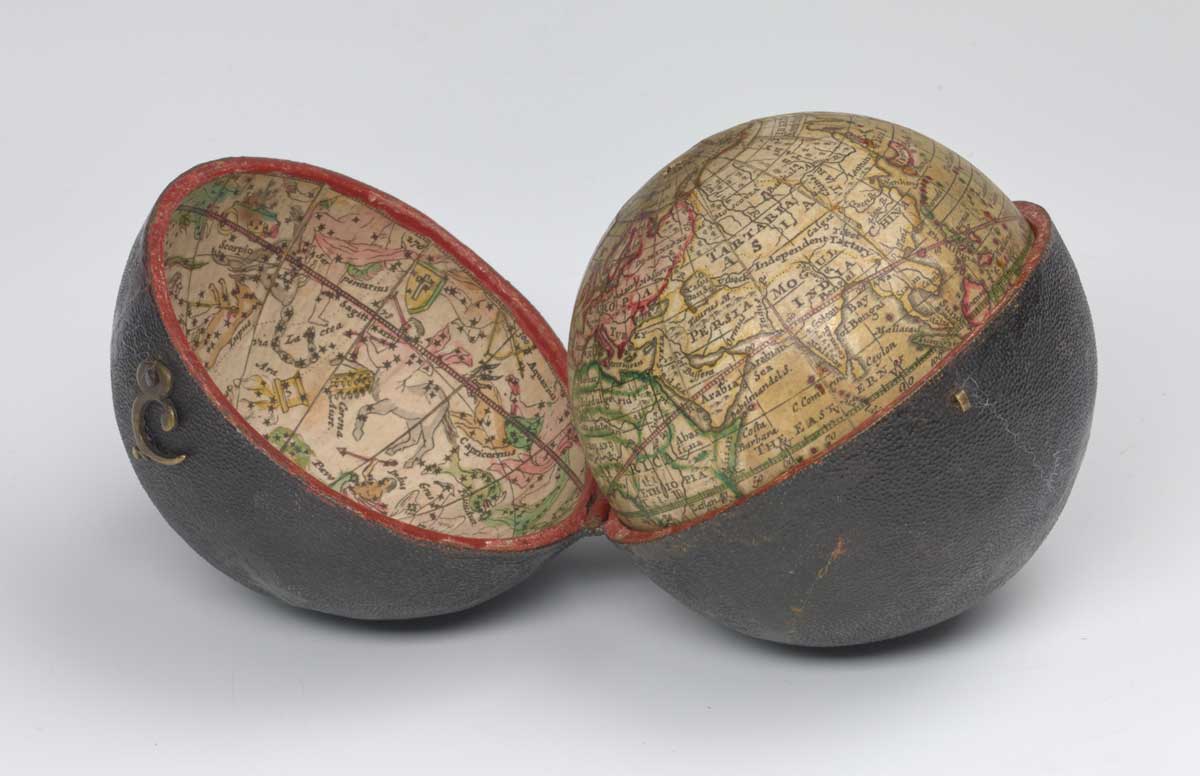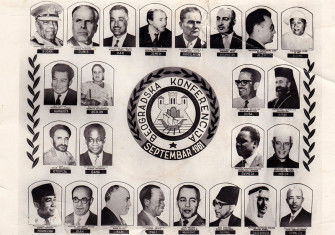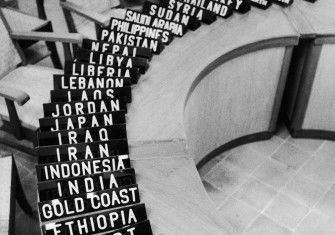Does the Concept of the Third World have any Historical Value?
Long out of fashion, the term ‘Third World’ emerged amid the political polarisation of the Cold War. Now there is war in Europe again, and renewed talk of Non-Alignment. Does the ‘Global South’ exist?

‘The so-called Third World rarely acted collectively’
Hazem Kandil, Professor of Historical and Political Sociology at the University of Cambridge
Catch-all terms are inherently inaccurate, though their lineage and reception are worth exploring. For most people, the ‘Third World’ suggests a group of struggling, undeveloped societies, a term abandoned because it sounds awfully patronising. Cold War historians know it was used to describe that third camp of states that identified neither with the capitalist camp nor with the communist camp.
But regardless of origins, the term was embraced in much of Africa, Asia and Latin America for its revolutionary connotations – and it is no coincidence that it was coined in the 1950s by a left-leaning Frenchman, Alfred Sauvy, who purposely drew an analogy with the ‘third estate’. The French Revolution was an attack on the privileges of the clerical and aristocratic elite – the first and second estates – by the commoners, or third estate, who felt excluded and exploited. Likewise, postcolonial countries believed it was their natural and human resources that had allowed the West to prosper, and demanded compensation.
Soon, however, it became clear that these countries could scarcely behave as a united front, even if they had shared interests. To start with, colonial practices were not uniform, which meant that some Third World states were more hostile to the West than others. Secondly, despite attempts to portray themselves as Non-Aligned during the Cold War, most Third World leaders were firmly allied to either Washington or Moscow. And, of course, the War on Terror created particular tensions between Muslim-majority members of the bloc and the United States and Europe. Besides coordinating UN votes and other symbolic gestures, the so-called Third World rarely acted collectively.
The term was eventually replaced by the equally vague ‘Global South’, another attempt to highlight the divide between the victims of colonialism and their past tormentors, this time cast as the ‘Global North’. Curiously, this new category comes at a time when that imagined postcolonial community is even more fragmented than it was during the 1960s and 1970s. As a result, outside academic circles and development agencies, it has gained no currency among locals, as it were. Evidently, reality has little bearing over the desire to project a sense of revolutionary solidarity onto these societies.
‘We are really talking about Third Worlds’
Hana Qugana, Lecturer in Global History at the University of Sussex
Historical value derives from the shared benefit of the stories we tell, according to the times in which they are told. But time – and also history – is valued differently in the postcolony. The writer Rogelio Braga said as much in their recent collection of short stories about Philippine society, Is There Rush Hour in a Third World Country? Set during the rise of global outsourcing in the 2000s (think call centres), it follows the lives of the working poor and aspiring middle classes, lived at all hours, every day of the week. From 3am lunch breaks in a mini-mart to romantic rendezvous in a Catholic church, ‘time off’ in this former American and Spanish colony is finite and rarely one’s own. Braga’s conscious use of ‘Third World’, as opposed to ‘developing’, is (as Eric Abalajon puts it) ‘a declaration that it is not a question of catching up in order to taste the elusive fruits of neoliberalism, but a demand to reimagine better living conditions for people who can hardly take a break from labour or know very little of life outside of it’.
The Third World’s incarnation was not geographical, but social and political. To take the term simply as an outmoded by-product of clashing Cold War ideologies neglects the power of its appropriation by those who choose aspiration over imposed atrophy. Since at least the 1955 Afro-Asian Conference in Bandung and the Tricontinental Conference in Havana 11 years later, formerly colonised peoples in Asia, Africa, Latin America and elsewhere have worked to transcend imperial power dynamics and forge new ones between themselves.
When we speak of the Third World, we are really talking about Third Worlds. Given how prevalent talk of the ‘Bandung spirit’ is, it is easy to overlook the autocratic ‘Third Worldisms’ of figures like Muammar Gaddafi and the Marcoses. We forget that when Imelda Marcos landed in Tripoli in 1976, it was pitched to the Filipino people not as a meeting of two dictatorships, but as an opportunity to perform solidarity with another former colonial state. Acknowledging the allure of this sort of Third-Worldist vision helps us to understand the recent return of the Marcos clan to power in the Philippines – and why someone like Braga lives in exile.
‘The “Third World” was there to be won, ideologically moulded and carved up’
Avinash Paliwal, Senior Lecturer in International Relations at SOAS, University of London
The concept of the ‘Third World’ emerged in the early 1950s when the Cold War was intensifying. To make sense of the flux in the postwar world order, the term became a simplistic, but compelling, category for newly decolonised states in Africa, Asia and Latin America who were struggling to develop postcolonial identities and shed dependence on erstwhile European colonisers. Perhaps unwittingly, the concept spelled out the uncomfortable realities of global race relations and a caste system that divided the world into ‘First’, ‘Second’ and ‘Third’. The premise was that countries in the Third World were inanimate as far as world politics went thanks to their domestic limitations and conflicts.
An associated premise was that these countries were recipients of European world views, largesse and material aid. This made the ‘Third World’ a site for European, American and Soviet experimentation – and competition – during the Cold War. The Third World was there to be won, ideologically moulded and accordingly carved up between rivals inhabiting the ‘upper’ worlds.
The concept of Third World, then, is of certain historical value. In a sense, it can be seen as the manifestation of colonialism’s long shadow. By relegating entire continents to the status of empty vessels, it explains why European colonialism generated pushback for so long after decolonisation. But it also explains how politics and history are connected. The idea of a lesser non European world enabled both the victors and the vanquished of the Second World War to remain reassured of their centrality in global politics – even civilisational greatness – which came under doubt during the darker moments of the war. After all, it takes a degree of insularity to denounce systemic shifts triggered by decolonisation and the emergence of the Non-Aligned Movement as sideshows to the prevailing Cold War binaries.
The Third World, then, offers a site of valuable critical inquiry that could help make sense of why countries in the so-called ‘Global South’ refuse to criticise Russia’s invasion of Ukraine, or to see the democracies-versus-autocracies framing of the current Sino-American rivalry as what it truly is: ridiculous.
‘It certainly does seem consigned to history’
Amrita Malhi, Researcher at Flinders University and the Australian National University
The concept of the Third World has faded in the last three decades, ceding ground to the depoliticised ‘Global South’. Yet belief in the Third World once animated struggles in Europe’s former colonies, while in the West it electrified the social movements of the 1960s, linking struggles against racism and militarism at home with support for anti-colonial movements. Though flawed and imperfect, the solidarities produced by the concept were once transformative. Now, it certainly does seem consigned to history, especially with the ‘rise’ of India and China. The West, in particular, is threatened by China and sees India as a counterbalancing force. Even as the idea of a Third World continues to lose ground, the concept has value as a point of comparison, helping us understand two recent developments that have replaced it.
The first is a new global multipolarity, in which not only India and China, but a range of other states, such as Turkey, Brazil, Egypt and Indonesia, are expected to vie to become global – or regional – poles. To manage this new reality, ‘middle powers’ like Australia are investing heavily in the new concept of the ‘Indo-Pacific’ – an imagined space with fuzzy boundaries encompassing the Indian and Pacific oceans with the Strait of Malacca as their fulcrum. This construct carves up the former Third World, along with any residual notions of pan-Asian solidarity, in line with the West’s new priorities such as balancing China. Its proponents seek to convert the concept into a genuine regional community, even writing histories that pre-empt its adoption beyond the national security and foreign policy workforce, like a forward-thinking Geppetto preparing for Pinocchio’s first breaths (see Rory Medcalf’s Contest for the Indo-Pacific).
The second development is the co-opting of anti-racist politics under the rubric of‘ diversity’ as the West seeks to refresh its soft power after the War on Terror. Third World diasporas’ calls for racial equality are now channelled into elite-led diversity initiatives that speak of ‘social license’. All the while, diaspora successes are said to demonstrate that Western societies are now multicultural utopias – and no longer predatory threats to the world they once colonised.






